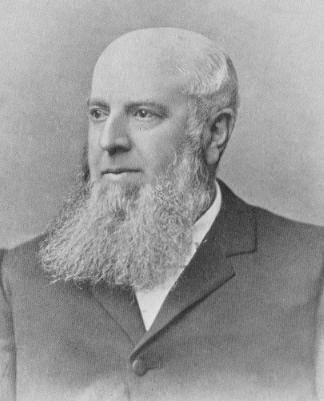Rainham in the 1850s
Still a relatively small village located on the edge of the borough of Sittingbourne and Milton, Rainham had a population of 1,155 in 1851. This is in comparison with 1801 when only 722 people lived there so the population more than doubled in just fifty years.
The village population mainly inhabited the high street with a small number of houses in White Horse Lane (later Station Road). Although there were some businesses agriculture remained the main source of employment in an area renowned for its wheat growing soil. Cherry orchards existed just off the high street and hops were grown at Moor Street and Siloam Farm in Chapel Lane (now Mierscourt Lane) but much of the farmland was arable with a large wooded area at Rainham Mark.
Principal landowners were the Earl of Thanet, St Katherine’s Hospital and John Wingfield-Stratford while well-known local farmers included Thomas Dodd from central Rainham who owned 300 acres, James Miles who owned 270 acres at Siloam Farm and Richard Wakeley who owned 262 acres and employed 36 men and 4 boys at Moor Street. Smaller farmers included Tom Gilbert, Daniel Green, William Packman, James Mansfield, Walter Prentis, William Smart, Charles Rich, James Wilkins and Robert Watson.
William Walter lived in Berengrave House and owned Berengrove Park and farmland in the locality which also included picturesque woodland with ponds stretching as far as the present day railway station and this served as a popular venue for residents to relax on weekends.
In Rainham High Street St Margaret’s Church stood out as the dominant building where Reverend John Poore served as vicar and Reverend George Cole curate with the parsonage (now a fitness centre) on the other side of the road. Shops were much fewer than in later years and included butcher Robert Maddocks, grocer and draper William Moss, blacksmith George Pope and shopkeeper George Turner. Tom Wyles served as a beer retailer, William Burley as a tailor, James Atkins a malster and James Taylor a plumber and glazier. Farther along the high street at the bottom end of Chapel Lane George Longley had a nursery, later known as Mardale Nursery with a pond and worked as a seedsman while in Lower Rainham Tom Dennis had a grocer’s shop.
Henry Penfold worked as the village doctor and continued to do so for many years while Caroline Bleeze became a long serving postmistress at the post office and also ran a bakery. Thomas Hutchinson and his wife Dorothy ran the National School constructed and opened in White Horse Lane on the site of the present day shopping centre in 1847.
Village pubs included the White Horse run by Charles Sayer then by Mr Conningsby, The Cricketers Inn run by George Harriss, The Lion Hotel run by William Allsworth, The George & Dragon run by Henry Kitchingham and The Three Mariners run by Tom Knight.
Public health periodically arose as an issue, particularly at the beginning of the decade in 1850 when nine people died of cholera caused by sewage contaminated water. Outbreaks of diphtheria and scarlet fever also periodically broke out.
The construction of the railway and the station became the most important development during the decade. The station opened on January 25th 1858 and became known as ‘Rainham & Newington’ until it was renamed ‘Rainham’ in 1862. The station’s two storey brick building incorporated the station master’s accommodation. A wooden shelter stood on the south side of the station for waiting passengers and a foot track linked the two platforms with a goods shed connected by a single track at the Gillingham end. Because a signal box didn’t exist the points were operated by manual levers.
The railway brought immediate benefits to the village. Firstly, local farmers who had sold much of their produce locally or had it transported by slow moving barges to London were now able to transport their produce to the capital much quicker by train. The railway also opened the way for an increase in the local population, attracting more people to the area in forthcoming years.

Watercolour painting of Rainham in around 1800 - by 1850 the population had doubled to 1,155
Because of long working hours many residents had little spare time and few recreational facilities existed apart from local pubs. This changed for cricket lovers in 1856 when farmers Richard Mansfield Wakeley and Thomas Dodd formed Rainham Cricket Club and James Miles who owned Siloam Farm allowed the club the use of his meadow for home matches. The first match played by Rainham took place against The Angel Club, Strood on Wednesday July 2nd 1856. Although Rainham lost the game they quickly improved and became one of the strongest clubs in the area led by their captain Richard Wakeley and played matches as far away as Selling near Faversham. Thomas Stanley Wakeley, Edward Dodd, James Atkins, William Burley, Charles Moss, James Mansfield and James Miles were some of the original players.

Photo of TS Wakeley, Corn Merchant in Rainham Kent
Although Rainham still maintained the image of a small village at the end of the 1850s’ it continued to expand with the coming of the railway and this led to an increase in the local population which had risen to 3,905 by 1901. This doubling of the population and an expansion of businesses in just fifty years followed the trend seen in the first half of the century making Rainham the biggest village in the area.










































































































































